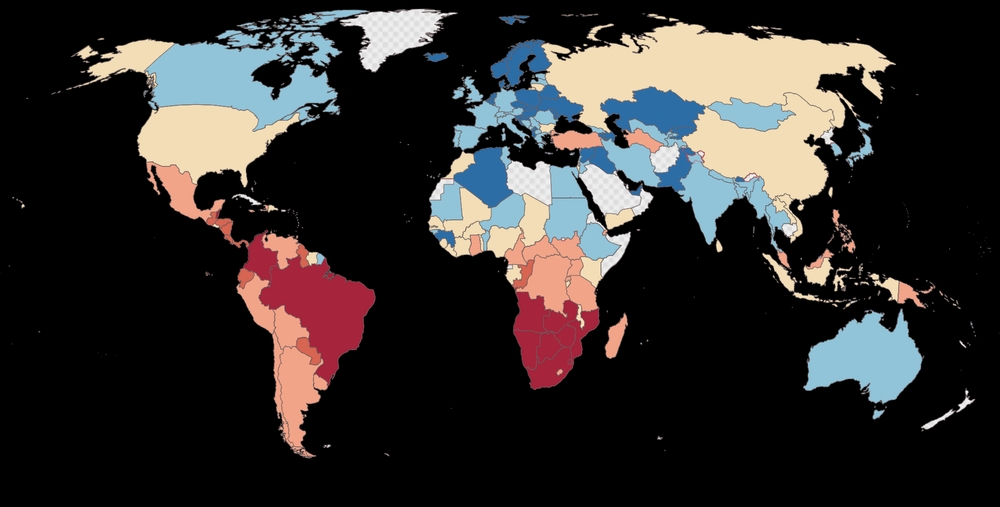Published
- 4 min read
Economic Growth Through Innovation: Why Inequality is a Driver of Progress

Economic Growth Through Innovation: Why Inequality is a Driver of Progress
Economic inequality is often portrayed as a societal ill that needs immediate rectification. However, the counterargument is equally compelling: inequality serves as a catalyst for progress, innovation, and economic dynamism. While debates on equality often focus on redistribution and welfare, this article delves into the overlooked benefits of inequality in fostering global economic advancement.
Inequality Fuels Competition and Innovation
Economic disparity creates competition—a core driver of innovation. When individuals and businesses compete to climb the socioeconomic ladder, they often develop groundbreaking ideas, products, and services. Consider the tech boom in Silicon Valley: a region with significant wealth disparity but also a hub of innovation. The promise of financial reward inspires individuals to take risks, creating technologies that redefine industries and improve quality of life worldwide.
Entrepreneurs and innovators thrive in environments where incentives align with their potential to reap outsized rewards. In countries with higher inequality, there is often a stronger emphasis on meritocracy, where talent and effort translate into financial success.
Economic Mobility: Opportunity Over Equality
Critics argue that inequality hinders social mobility, but evidence suggests otherwise. Countries with market-driven economies provide avenues for individuals to rise based on talent and perseverance. While absolute equality is unattainable and undesirable, relative mobility ensures that the ambitious can succeed regardless of their starting point.
Rather than focusing on narrowing the wealth gap, policymakers should prioritize creating opportunities for upward mobility. Investments in education, skill development, and infrastructure empower individuals to participate in the economy meaningfully.
Global Economic Development and Inequality
Globally, inequality between nations has decreased dramatically over the past century. Rapid economic growth in developing nations like China and India exemplifies how disparities can accelerate progress. These nations leveraged their lower production costs and competitive labor markets to attract investments, spurring technological and economic advancements.
Inequality between countries has fueled globalization, with wealthier nations outsourcing production and services to emerging economies. This dynamic fosters international trade, innovation diffusion, and shared prosperity.
Incentives for Investment and Growth
High earners and wealthy individuals are often the primary investors in ventures that drive economic growth. Their resources enable the creation of startups, infrastructure projects, and technological advancements. This capital accumulation plays a pivotal role in funding research and development, ensuring that society benefits from continual progress.
Progressive taxation aimed at drastically reducing inequality can disincentivize innovation and risk-taking. Historical evidence from the 1980s economic reforms in the United States shows how reducing top tax rates spurred growth and entrepreneurship.
Inequality as a Reflection of Meritocracy
Economic disparity often reflects differences in skills, effort, and innovation rather than systemic unfairness. A meritocratic society rewards individuals who contribute significantly to the economy, creating a cycle of incentives for others to strive for excellence.
For example, athletes, entertainers, and tech entrepreneurs often achieve immense wealth due to their unique talents and contributions. Their success stories inspire millions to innovate and pursue excellence in their respective fields.
Addressing Criticisms: A Balanced Perspective
While inequality drives progress, it is essential to address extreme disparities that hinder social cohesion. Policymakers must strike a balance between fostering innovation and ensuring basic standards of living. Universal access to education, healthcare, and housing provides a safety net without stifling competition or disincentivizing success.
Rather than focusing on redistribution, governments can support public-private partnerships that empower individuals to create wealth. Programs that encourage entrepreneurship and skill development are more sustainable than direct wealth transfers.
Conclusion: The Role of Inequality in a Thriving Economy
Economic inequality is not a flaw but a feature of dynamic, growing societies. It spurs innovation, incentivizes risk-taking, and fosters competition. While it is crucial to address extreme poverty and provide equal opportunities, dismantling inequality entirely risks undermining the very systems that drive progress.
In a globalized world, the interplay between inequality and opportunity has led to unprecedented advancements in technology, healthcare, and infrastructure. Rather than focusing solely on narrowing the wealth gap, societies should aim to harness inequality as a tool for collective progress.
